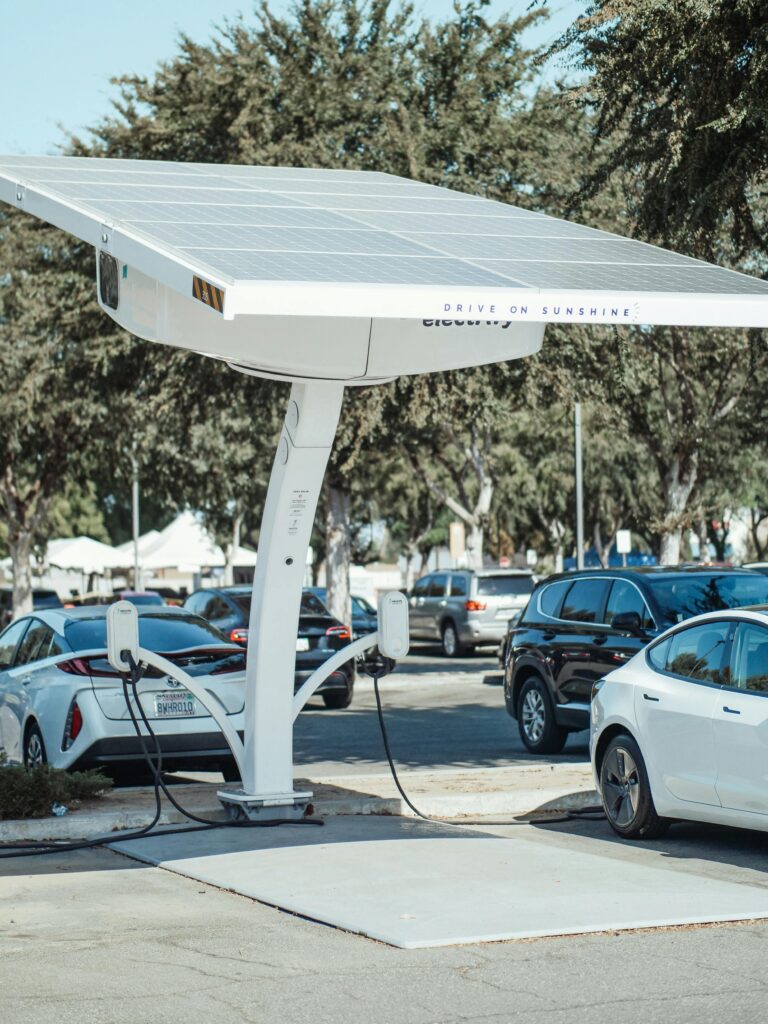Tech
EV Technology: The Future of Electric Vehicles and Sustainable Mobility
Introduction
Electric Vehicle Technology (EV Tech) is reshaping the future of transportation. With rising concerns over climate change, fuel dependency, and urban pollution, electric vehicles have emerged as a sustainable alternative to traditional combustion-engine cars. In 2025, EV technology is advancing at record speed, powered by innovations in batteries, charging infrastructure, artificial intelligence, and smart mobility solutions.
This blog explores the fundamentals of EV technology, its benefits, challenges, and the trends that are driving the global transition to electric mobility.
What is EV Technology?
EV technology refers to the systems and innovations that power electric vehicles, replacing conventional fuel-driven engines with electric motors and batteries. Unlike internal combustion engine (ICE) vehicles, EVs use stored electrical energy for propulsion, making them cleaner, quieter, and often more cost-efficient.
Key Components of EV Tech include:

- Battery Systems – Store and supply power.
- Electric Motors – Convert electrical energy into mechanical energy.
- Charging Infrastructure – Networks that recharge EV batteries.
- Software & AI – Optimize energy efficiency and integrate smart driving features.
Evolution of EV Technology
- Early 19th Century – First prototypes of electric vehicles appeared, but limited by battery technology.
- Late 20th Century – Introduction of hybrid vehicles (e.g., Toyota Prius).
- 2000s – Lithium-ion batteries revolutionized EV performance.
- 2010s – Tesla, Nissan, and Chevrolet popularized modern EVs.
- 2020s – Emergence of solid-state batteries, wireless charging, and AI-driven EVs.
Core Components of EV Technology
1. Battery Systems
The battery is the heart of an EV.
- Lithium-ion Batteries – Current standard, offering balance of cost, weight, and performance.
- Solid-State Batteries – Next-generation tech with faster charging, higher capacity, and safety benefits.
- Battery Recycling – Essential for sustainability, reducing reliance on rare earth metals.
2. Electric Motors
EVs rely on motors instead of engines.
- Induction Motors – Used by Tesla for durability.
- Permanent Magnet Motors – Efficient but depend on rare earth materials.
- Switch Reluctance Motors – Gaining popularity due to efficiency and cost-effectiveness.
3. Charging Infrastructure
- Level 1 (Slow Charging): Household outlets, ~8–12 hours for full charge.
- Level 2 (Fast Charging): Common in homes/offices, 3–6 hours.
- DC Fast Charging: Rapid, ~30 minutes to 1 hour.
- Wireless Charging: Emerging tech for convenience.
4. Software & AI Integration
EVs are as much about software as hardware.
- AI optimizes battery usage.
- Smart navigation suggests charging stations.
- Over-the-air (OTA) updates improve features.
- Integration with autonomous driving systems.
Benefits of EV Technology
- Environmental Sustainability – Zero tailpipe emissions reduce air pollution.
- Lower Operating Costs – Electricity is cheaper than fuel; fewer moving parts mean less maintenance.
- Energy Efficiency – EVs convert ~60% of energy into motion (vs ~20% for ICE vehicles).
- Government Incentives – Tax breaks, subsidies, and priority access to urban areas.
- Noise Reduction – EVs operate quietly, improving urban living conditions.
Challenges Facing EV Technology
- High Initial Cost – Batteries still make EVs more expensive upfront.
- Charging Infrastructure Gaps – Limited access in rural areas.
- Range Anxiety – Fear of running out of charge.
- Battery Life & Recycling Issues – Sustainability concerns remain.
- Grid Demand – Increased EV adoption puts pressure on energy grids.
Future Trends in EV Technology
- Solid-State Batteries – Promising faster charging and greater energy density.
- Vehicle-to-Grid (V2G) – EVs feeding power back into grids during peak hours.
- Autonomous EVs – Combining self-driving tech with electric propulsion.
- Hydrogen Fuel Cell EVs – Offering long-range clean energy.
- Global Expansion of Charging Networks – Faster and more accessible infrastructure.
Global Adoption of EV Tech
- China – World leader with largest EV market and government support.
- Europe – Strong regulations pushing for 100% EV adoption by 2035.
- United States – Rapid expansion led by Tesla, Rivian, and GM.
- Developing Countries – Gradual adoption due to infrastructure and affordability issues.
EV Tech for Consumers
How to Choose an EV:
- Check battery range.
- Review charging options nearby.
- Compare total cost of ownership (TCO).
- Look for government incentives.
Lifestyle Impact:
- Lower maintenance.
- Eco-conscious driving.
- Need to plan charging stops during long trips.
FAQs
1. How long does it take to charge an EV?
Depends on the charger: Level 1 takes 8–12 hours, while DC fast charging can recharge in under an hour.
2. What is the lifespan of an EV battery?
Typically 8–15 years, depending on usage and technology.
3. Are EVs cheaper to maintain than gas cars?
Yes. Fewer moving parts mean reduced repair costs.
4. Can EVs really reduce carbon emissions?
Yes, especially when powered by renewable energy sources.
5. What’s next for EV technology?
Solid-state batteries, AI-powered driving, and global charging networks.
Conclusion
EV technology is not just a trend it’s the future of transportation. With advancements in batteries, charging infrastructure, and AI integration, EVs are becoming more affordable, efficient, and accessible. Governments and industries worldwide are investing heavily in EV innovation, accelerating the shift toward a greener, smarter, and more sustainable future.